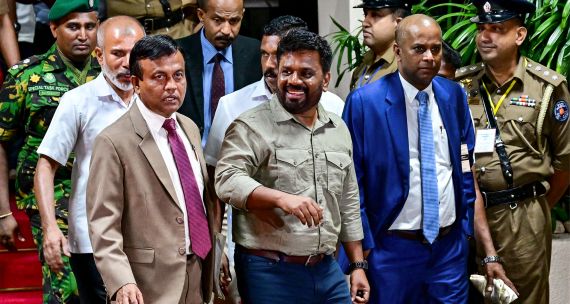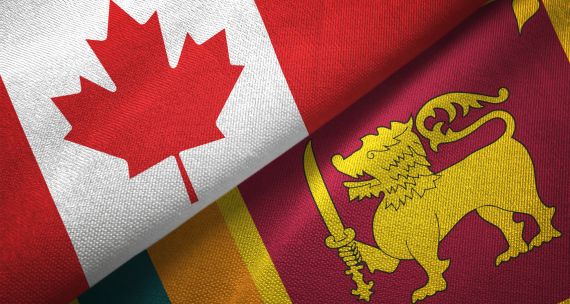In 2022, Sri Lanka became the first Indo-Pacific country in decades to default on its external debt, triggering an economic collapse that pushed millions below the poverty line. Inflation surged past 70 per cent, foreign reserves plunged to nearly zero, food insecurity spread widely, and mass protests toppled the government of former president Gotabaya Rajapaksa.
Fast forward to 2025, and the picture looks strikingly different. Inflation has turned negative, foreign reserves have more than doubled, and GDP growth rebounded to 4.5 per cent in 2024. The International Monetary Fund’s (IMF) US$3 billion Extended Fund Facility program, launched in March 2023, has passed three consecutive reviews, with Colombo meeting most fiscal and monetary reform targets, including its first primary surplus in over a decade. Politically, the country has also experienced change. The left-wing National People’s Power party swept to power in late 2024 and, in its first year, has managed to maintain the momentum for reforms.
At first glance, Sri Lanka’s comeback seems impressive. However, questions remain: structural vulnerabilities, social pressures, and emerging external shocks, including abrupt changes to trade policy in key export markets such as the U.S., will test the resilience of the recovery.
2022: The Road to Default: Structural Weaknesses and Policy Missteps
Sri Lanka’s 2022 crisis was the culmination of years of economic mismanagement, structural vulnerabilities, and policy miscalculations. Successive governments pursued ambitious infrastructure and development projects, mainly financed through external borrowing. Much of this debt came from high-interest commercial loans and bilateral lending, including significant credit from China under its Belt and Road Initiative. While these projects, ranging from highways and ports to energy plants, were meant to modernize the country, many delivered limited economic returns. The debt accumulated under these programs made Sri Lanka one of the most highly leveraged economies in the Indo-Pacific, leaving it exposed to shifts in global financial conditions.
The structural weaknesses were compounded by domestic fiscal mismanagement. Tax cuts introduced in 2019 sharply reduced government revenue, while expansive populist subsidies for energy and food drained the treasury. Public spending expanded without parallel increases in productive capacity or revenue, widening the fiscal deficit and weakening the government’s ability to respond to external shocks. By 2021, Sri Lanka had lost access to international capital markets, making it increasingly reliant on short-term borrowing and financing from countries such as China.
The COVID-19 pandemic devastated the country’s already fragile economy. Tourism, a vital source of foreign currency, came to a near-complete halt, resulting in an estimated five per cent loss in annual GDP revenue. Remittances from overseas Sri Lankans, while more resilient, could not offset the collapse in trade and tourism. The currency came under pressure, the costs of imports of essential goods surged, and the central bank’s foreign reserves were rapidly depleted.
By April 2022, the government could no longer meet its external debt obligations and suspended payments on approximately US$46 billion in foreign debt, marking the first sovereign default in the Indo-Pacific in over two decades. The default triggered an immediate financial crisis. The Sri Lankan rupee depreciated sharply, inflation soared above 70 per cent, and shortages of fuel, medicine, and basic foodstuffs became widespread. Power outages became a daily occurrence, and transport and supply chains were heavily disrupted.
The social consequences were severe. Public anger, fuelled by worsening living conditions and perceived governmental negligence, erupted into mass protests that paralyzed major cities, forcing widespread closures of businesses and schools. The unrest culminated in July 2022 with President Rajapaksa fleeing the country. Extreme poverty quadrupled between 2019 and 2022, and large segments of the population faced severe food insecurity.
International actors responded quickly. The United Nations, World Bank, and Asian Development Bank mobilized emergency humanitarian and financial support. Canada played a key role in delivering immediate relief, providing food security assistance through multilateral channels. Other countries extended bilateral aid, while multilateral institutions prepared stabilization programs to prevent further economic collapse.
The 2022 crisis underscored the vulnerabilities of Sri Lanka’s economic model: high external debt, overreliance on foreign financing for infrastructure development, policy inconsistency, and weak fiscal buffers left the country susceptible to both domestic and external shocks. It also highlighted the human cost of economic mismanagement. These lessons would shape the policy decisions and reform priorities of the post-crisis administration.
2023: IMF Intervention and Early Stabilization
The four-year, US$3 billion IMF loan is conditioned on deep fiscal and structural reforms, including adopting cost-reflective energy pricing, expanding the tax base, ensuring central bank independence, and strengthening anti-corruption measures. These reforms aimed to restore macroeconomic stability, rebuild investor confidence, and establish the conditions for long-term sustainable growth.
Stabilization came faster than many expected. Inflation, which had exceeded 70 per cent in late 2022, fell below five per cent by late 2023. This dramatic decline reflected a combination of tighter monetary policy, exchange rate flexibility, import compression, and the unwinding of extreme price pressures from the prior crisis. Foreign reserves rose to US$4.5 billion, aided by multilateral inflows, export gains, and import substitution. Sri Lanka posted a modest current account surplus for the first time in years.
Despite these gains, the social costs were significant. Households and businesses were strained by higher taxes and adjustments in utility prices to reflect the true cost of production and reduce state subsidies. Ultimately, higher taxes strained households and businesses while utility price hikes, designed to ease pressure on public finances and help loss-making utilities move toward financial sustainability, led to steep increases in living costs for ordinary citizens and higher operating expenses for small and medium-sized enterprises. Together, these tax and utility hikes laid the groundwork for the public frustration that culminated in the political upheaval that led to the election of a new government in 2024.
2024: Political Reset and Reform Continuity
In late 2024, the National People’s Power (NPP) party, a coalition of left-wing, non-traditional political actors, won both the presidency and a parliamentary majority, ending decades of dominance by the Rajapaksa dynasty and other entrenched parties.
Anura Kumara Dissanayake, the NPP president, had campaigned on a platform of clean governance, social protections, and broad-based economic reform. While markets initially feared populist overreach, his government quickly moved to reassure investors and international partners. Dissanayake reaffirmed a commitment to the IMF program while introducing targeted adjustments, including enhanced social spending for vulnerable communities and a review of indirect tax burdens on low-income households. The combination of policy continuity and renewed political legitimacy put the recovery on firmer footing, increasing the likelihood of sustained reform implementation.
Late 2024-Early 2025: Debt Restructuring and Macroeconomic Indicators
Debt restructuring marked a critical turning point in Sri Lanka’s post-crisis recovery. In December 2024, the government reached a landmark agreement with bondholders, achieving 98 per cent participation, a strong signal of investor confidence. Subsequent negotiations with Chinese creditors stabilized bilateral debt relations. Discussions with the Paris Club, an informal group of major creditor countries that attempts to assist debtor economies with repayments, are ongoing but moving in a constructive direction.
Macroeconomic indicators support cautious optimism. GDP growth rebounded to 4.5 per cent in 2024, driven by macro-level stabilization and improved investor sentiment. Growth is projected to level off at three per cent in 2025, reflecting normalization after the crisis. Inflation fell to negative 1.5 per cent by the fourth quarter of 2024. This deflation primarily reflects price stability and external sector correction, rather than weak domestic demand. Foreign reserves rose to US$6.1 billion in 2024 and are projected to exceed US$9 billion in 2025. Fiscal consolidation yielded a primary surplus of 2.2 per cent of GDP, the first in over a decade. The Debt-to-GDP ratio declined to 104.6 per cent in 2024, with projections below 97 per cent by 2029, assuming continued fiscal discipline and moderate growth.
These developments suggest that Sri Lanka is regaining credibility with markets and development partners. However, the remaining structural challenges include the potential for social unrest and uneven private sector recovery, which could undermine the momentum of reform.
Reform Fatigue or Consolidation and Continuation?
In March 2025, the IMF completed its third program review, confirming that Sri Lanka had met the majority of fiscal and monetary targets. Key benchmarks, including inflation control, reserve accumulation, and primary surplus targets (the saving of government resources to pay interest on the public debt), were achieved or exceeded, indicating sustained macroeconomic stabilization.
However, the IMF review also highlighted emerging risks. Social protection spending lagged behind agreed thresholds, and politically sensitive electricity pricing reforms were partially reversed, due to the perceived burden on the general population. Moreover, while the core reform framework remains on track, early signs of “reform fatigue” suggest that maintaining public support for fiscal adjustment and structural reforms will require careful policy management.
Nevertheless, the 2025 budget focuses on strengthening government finances and sustaining reforms. Measures include expanding the value-added tax, introducing a property tax, and maintaining strict control over public expenditure. Key priorities include ensuring fair pricing of utilities, intensifying anti-corruption efforts, and resolving outstanding debt agreements with remaining international creditors.
External Shocks: U.S. Tariffs and Trade Challenges
On August 1, 2025, U.S. President Donald Trump reinstated a 30 per cent tariff on Sri Lankan exports, reversing the previous month’s temporary reduction to 20 per cent. The U.S. justified the decision by citing perceived “unfair trade practices” and Sri Lanka’s growing economic ties with China. The reimposition of this tariff threatens to disrupt key export sectors, including apparel, tea, seafood, and rubber. The U.S. absorbs 20 to 25 per cent of Sri Lanka’s total exports and nearly 40 per cent of its apparel shipments, which alone account for over US$3 billion in annual revenue and support nearly one million jobs either directly or indirectly. Analysts warn the tariff could trigger significant job losses, reduce foreign exchange earnings, and undermine IMF-backed stabilization efforts.
The reimposition of the tariffs also underscores the vulnerability of the economy to external shocks and the strategic importance of diversified trade partnerships.
Implications for Canada
Canada’s longstanding engagement with Sri Lanka positions Ottawa to support economic recovery while advancing strategic interests. Opportunities include trade diversification, education partnerships, development co-operation, and geostrategic engagement. Sri Lanka’s stabilization provides Canada with avenues to expand exports in wheat, fertilizers, clean technology, and renewable energy. The island’s young, English-speaking population offers potential for collaboration in higher education, vocational training, and knowledge transfer in areas such as climate science, public administration, and health systems. Canadian development efforts, including governance support and civil society strengthening, complement Sri Lanka’s reform trajectory and will bolster its regional resilience.
Sri Lanka’s strategic location along key Indian Ocean trade routes further elevates the stakes. A stable, reform-oriented government can facilitate Canada’s Indo-Pacific objectives, including maritime security, infrastructure resilience, and democratic partnerships. In this context, sustained bilateral engagement across commercial, diplomatic, and institutional dimensions is timely and aligned with Ottawa’s Indo-Pacific Strategy.
• Edited by Suvolaxmi Dutta Choudhury, Program Manager, South Asia, Erin Williams, Director, Programs, and Vina Nadjibulla, Vice-President Research & Strategy, APF Canada.




